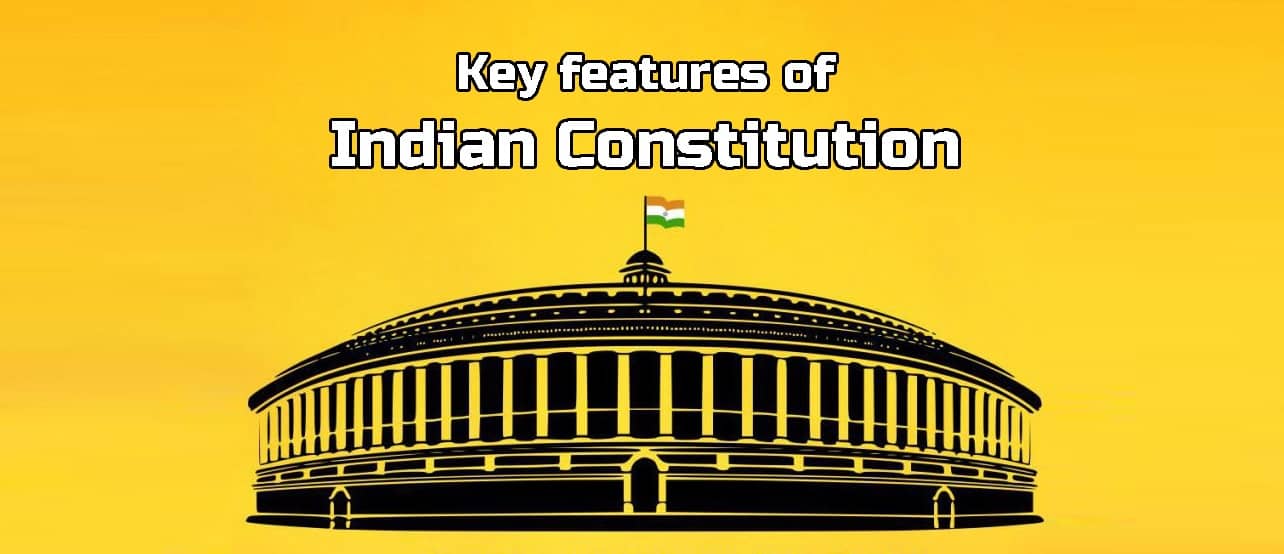
1. Which of the following is a fundamental feature of the Indian Constitution?
a) Federal structure
b) Unitary structure
c) Parliamentary system
d) Presidential system
Answer: a) Federal structure
2. Which article of the Constitution describes India as a "Sovereign, Socialist, Secular, Democratic Republic"?
a) Article 1
b) Article 2
c) Article 3
d) Article 25
Answer: a) Article 1 (Preamble)
3. What is the concept of "Basic Structure" in the Indian Constitution?
a) It refers to the fundamental rights
b) It refers to the directive principles of state policy
c) It refers to the essential features of the Constitution that cannot be amended
d) It refers to the powers of the judiciary
Answer: c) It refers to the essential features of the Constitution that cannot be amended
4. Which of the following is NOT a feature of the Indian Constitution?
a) Separation of powers
b) Checks and balances
c) Judicial review
d) Single citizenship
Answer: d) Single citizenship (India has dual citizenship)
5. Which article of the Constitution deals with the "Right to Equality"?
a) Article 14-18
b) Article 19-22
c) Article 23-24
d) Article 25-28
Answer: a) Article 14-18
6. What is the concept of "Procedure Established by Law" in the Indian Constitution?
a) It refers to the procedure for amending the Constitution
b) It refers to the procedure for making laws
c) It refers to the procedure for enforcing fundamental rights
d) It refers to the procedure for appointing judges
Answer: c) It refers to the procedure for enforcing fundamental rights
7. Which of the following is a feature of the Indian Constitution's amendment procedure?
a) Simple majority in both Houses
b) Two-thirds majority in both Houses
c) Special majority in both Houses and ratification by half of the states
d) Unanimity in both Houses
Answer: c) Special majority in both Houses and ratification by half of the states
8. Which of the following is a characteristic of the Indian Constitution's federal structure?
a) A strong center and weak states
b) A weak center and strong states
c) Equal powers between the center and states
d) A unitary system with no states
Answer: a) A strong center and weak states
9. Which article of the Constitution deals with the "Directive Principles of State Policy"?
a) Article 36-51
b) Article 52-61
c) Article 62-71
d) Article 72-81
Answer: a) Article 36-51
10. Which of the following is a feature of the Indian Constitution's judicial system?
a) An independent judiciary
b) A judiciary controlled by the executive
c) A judiciary controlled by the legislature
d) A judiciary with no powers of review
Answer: a) An independent judiciary
